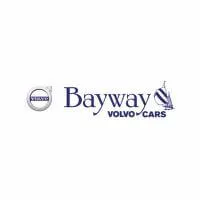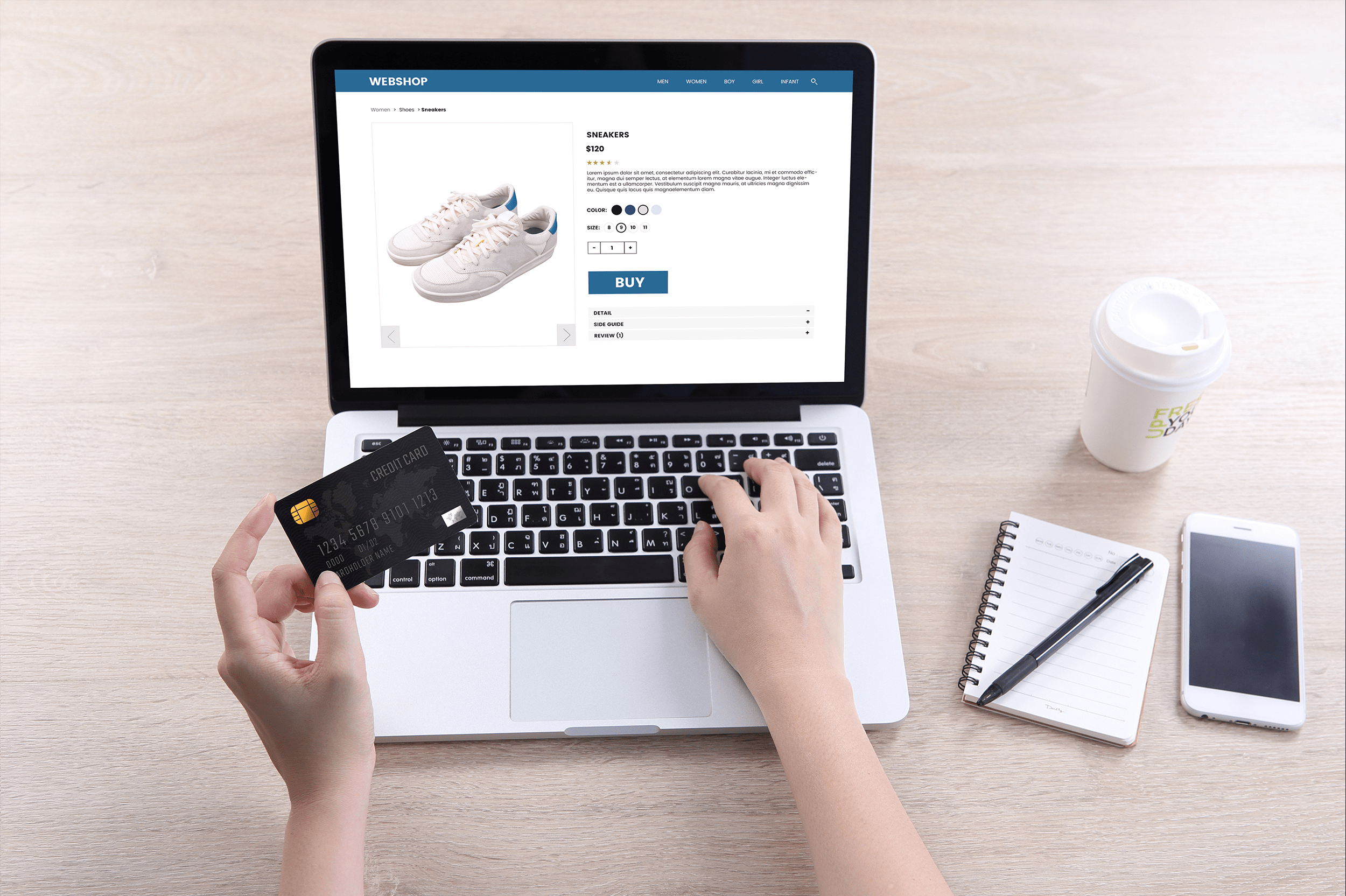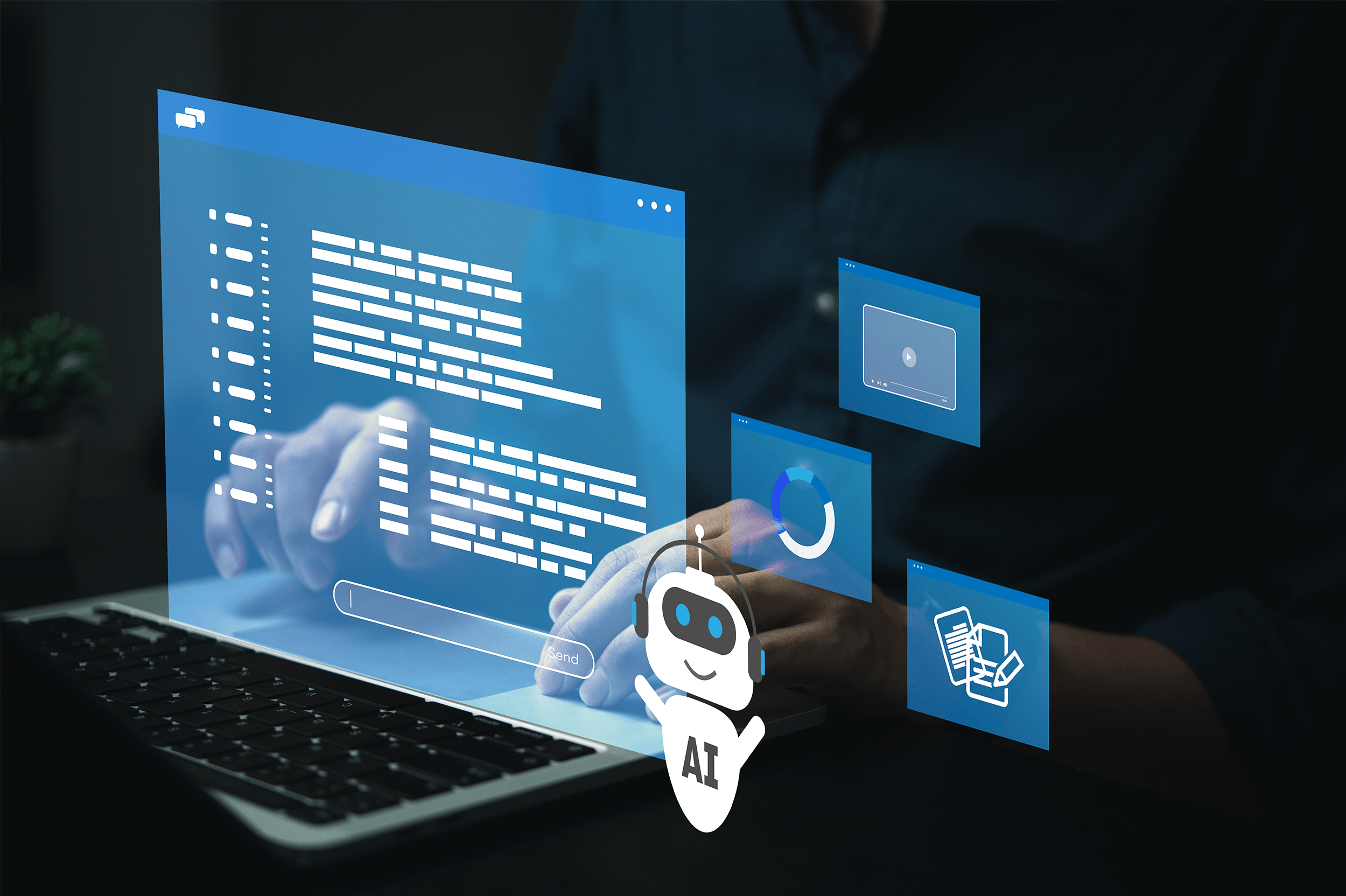Conversion rates are an essential performance metric for many businesses. Whether you’re converting leads to customers, visitors to subscribers, or first-time buyers to repeat customers, conversions contribute to your brand’s success. There are many factors that can contribute to your conversion rate, such as your landing page design or popup design, your copy, and the number of fields on a signup form.
So, when it comes to measuring and improving your conversion rate, there’s a lot to consider, and it can be difficult to know where to start if you’re not an experienced conversion rate optimization (CRO) pro. To help you learn the tricks of the CRO trade, we reached out to a panel of digital marketing experts and asked them to answer this question:
“What’s the most important thing for companies to understand when it comes to calculating and improving conversion rate?”
Meet Our Panel of Digital Marketing Experts:
Read on to learn what our experts had to say about the best ways to measure and improve your conversion rates.
Jon Torres
Jon Torres is a digital marketing consultant and the founder of JonTorres.com.
“I often see that businesses with low traffic have a limited budget for things well-funded companies do, such as thorough A/B testing or hiring conversion optimization specialists. Despite your limited budget, you can still do three things that will help you succeed: analyze competitors’ websites, place a chat button prominently on your website, and write clear, vivid, and actionable web copy.
Observe how your competitors structure their sites, where they place their call-to-action buttons, and what kind of USPs (unique selling propositions) they emphasize on every page. A visible chat button allows potential customers to ask any questions that may make them hesitant to buy from you. Use those FAQs to improve your site or offering so they don’t always need to ask you for assistance. Finally, if you want customers to take action, use clear language to give them a sense of what they can expect after buying from you (testimonials come in handy here).”
Brian Dean
Brian Dean is the Founder of Exploding Topics. Exploding Topics uncovers trends before they take off. Thousands of companies (including Shopify, Google, Apple, and Netflix) use Exploding Topics data to inform decisions on products, investments, and more.
“Improving conversion rate requires laser sharp precision. Depending on the marketing channel, you could have various audiences or even different strategies. That is why, depending on the situation, having various landing pages that are customized to each event can make perfect sense. In fact, I’d say that the more audience-specific your landing page and ad are, the better your chances of converting visitors into customers are.
There are numerous methods to segment your target further and develop an ad that links to a personalized landing page. You can utilize single keyword ad groups for Google ads, single interest ad groups for Facebook and Instagram advertisements, and so on. Of course, if you have a limited advertising budget, this isn’t a good idea, but as your business grows, you may want to gradually tailor each experience to enhance your conversion rate.”
Luisa Zhou
Luisa Zhou is the founder of LuisaZhou.com, a multiple 7-figure business that helps people turn their job skills into their own online businesses. She’s been featured in publications like Business Insider and Forbes and often shares digital marketing advice.
“The most important thing to understand when improving your conversion rate is that you know your audience and what their goals and challenges are. But even more specifically, you need to explain your benefits as clearly and concisely as possible. That’s where I would start any conversion optimization campaign – looking over your copy and doubling down on creating a clear message.
Over the years, I’ve noticed that this is typically where business owners miss the mark. Your messaging might be clear to you, but not to your audience. For example, if you focus on the features you offer, your audience won’t stick around for long. They need to see the benefits of your offer and how those benefits help them achieve their goals.”
Paul Sherman
Paul Sherman is the Chief Marketing Officer with Olive.
“Calculating your conversion rate is simple. It’s best to carry it out automatically with a spreadsheet to avoid errors, but if you’re just looking to quickly crunch the numbers, the formula goes as follows: take the number of conversions you’ve achieved, and divide that by your trackable interactions within the same time frame. Then, multiply the result by 100 to convert the number into a percentage. For example: if you were able to convert 250 users out of a group of 1,000, your calculation would be: 250/1000*100. The result indicates that your conversion rate would be 25%. It’s that easy!”
Ashley Howe
Ashley Howe is a Content Strategist at Tapfiliate, an affiliate, referral and influencer marketing software. She has a history of working in affiliate marketing, loves tea and writing about marketing, and can be found tweeting for Tapfiliate.
“Conversion rates can vary from business to business. The important thing is to benchmark your current conversion rate with your industry averages and find out where you stand. Then, look at what you can do on-site. You can use all the marketing tools in the book, but if your customer has a bad experience on your website or struggles to finish buying because their checkout experience is frustrating, then your conversion rates won’t improve no matter how hard you try. After your website has been improved, then it’s time to look at other methods to increase your conversion rate, like affiliates, paid search, retargeting, etc.”
James Crawford
James Crawford is the co-founder of shopping vouchers website DealDrop.
“When first presented with the results of your conversion rate analysis, the report can have a bewildering array of information. Unless the data relevant to your inquiry is correctly extrapolated, your efforts will have been in vain.
To avoid this, before starting your analysis, decide what benefit you are hoping to gain from the report. You may wish to know where your customers are coming from, or why they leave the site, and you will certainly need to know if items are being added to the cart and then removed or the page gets abandoned.
Before you can improve your conversion rate, you will need to identify exactly where and why customers are exiting the site and understand why they do this. With this information you can then investigate options for improving the process.”
Cale Loken
Cale Loken is a Business Consultant & the CEO at 301 Madison Consulting, a Digital Marketing Agency based in Minneapolis.
“It is not a single skill. Most businesses now value conversion rate as the most important KPI to measure the success of their business. As a result, companies are looking for a set of defined practices that they can use to optimize their conversion rate and improve their website performance. What they do not realize is that conversion rate optimization is not a single skill, and the optimization strategies can vary big time. The average conversion rate also varies for different industries, so you must have the right target in mind as well.
Optimization requires research pertaining to your domain and your website so you can understand what customers look for in your website. You cannot look at the optimization strategies of a competitor and apply them to your business straight away. Customer-centric research is required to make sure you improve in the right direction. Furthermore, it requires a combination of skills to improve your conversion rate, such as copywriting, design, analytics, etc. Companies need to cover all these areas to make a significant improvement in their conversion rates.”
Erin Zadoorian
Erin Zadoorian is the CEO and Executive Editor at Ministry of Hemp, the leading advocate for hemp in the United States.
“To improve conversion rate, businesses need to conduct in-depth research on their target population, perform various tests to measure effectiveness, and make constant improvements.
One main component that to acknowledge is optimizing site speed. A fast website load time is an important component of any search engine optimized website and conversion rate optimization (CRO). The longer it takes for a website to load, the more probable it is that users will abandon it and move to another.”
Taylor Ryan
Taylor Ryan is a 6x startup founder, angel investor, and keynote speaker who currently serves as the CEO of Copenhagen-based growth hacking agency Klint Marketing. Taylor is originally from from Washington, D.C., and he has over 14 years of experience in marketing.
“Ostensibly, conversion rates are fairly easy to calculate. You divide the total number of people who visited your site or opened your email by the number of people who performed a given action.
One word of caution though: like many KPIs, conversion rates are flawed. There are plenty of people (and I know this because I am one of them) who do not buy or sign up to a service after visiting a site. Instead, they’ll come back days later, perhaps on a different device, after they’ve researched the competition, looked at your reviews, and given it thought.
As a result, many marketers use conversion rates that are not reflective of the real percentage of people they are converting. (Essentially, your conversion rates are probably slightly higher than you think they are.)
In terms of how to improve your conversion rates, I’d say website and email copy is one of the most important things. You should exhaustively A/B test every piece of text that you send out or use to really nail down the tone of voice and language that is most effective.”
Jacob Villa
Jacob Villa is the Co-Founder and Marketing Director of School Authority, a site dedicated to matching students with their ideal college in the United States based on factors such as career aspirations, lifestyle, and other personal preferences.
“Conversions are the goal of almost any business that has a website. This figure is frequently used as proof of the ROI, demonstrating that business efforts and investments are paying off. It assists us in determining which of these efforts are successful and which are not, allowing us to select which are worth reiterating and which should be discarded.
We must be mindful while estimating our conversion rate to ensure that we are measuring the right activity. First, we must think about which action adds the most value to the page we are evaluating. The second is we should decide on a specific time frame for measuring conversions. Lastly, we should use the actual number of people interested in participating in the conversion. The denominator is determined by counting the number of people who had the opportunity to take the required action during the specified period.”
Courtney Donohue
After graduating in 2014, Courtney worked in customer service and marketing in the travel industry. Since joining the NH Strategic Marketing team in February of 2021 as the Marketing Coordinator, she’s been able to pursue her passion for digital marketing, dabble in event planning, and become part of a team that’s more of a family.
“When we’re working with clients that are trying to understand their conversion rate and make educated decisions, we really emphasize the importance of tracking. So many people that call us for information on their marketing efforts have no idea what’s working, and because of that, have a terrible conversion rate. The first step to every marketing strategy and to conversion rate calculations is to implement tracking into every aspect of your marketing.”
Logan Mallory
Logan Mallory is the VP of Marketing at Motivosity.
“The most important thing for companies to understand when calculating and improving conversion rate is the need to break down the conversion rate at each step of the funnel and then understand the showstoppers along each step of the user journey.
Many teams see a low overall sales conversion rate and have no idea where the problem is. Conversion rate should be measured along each step of the funnel – including the percentage of visitors that convert to leads, percentage of leads that book a demo call, the percentage of calls that convert into a sale, and the percentage of paying users that upgrade to a more expensive product.
Once teams identify where the step with the low conversion rate is, they can then start to put themselves in the shoes of the user and try to understand why people don’t want to take the next step before implementing changes to increase the conversion rate.”
Miles Liedtke
Miles Liedtke is a data driven e-commerce leader with a proven record for leading brands from early stages to mature thriving online experiences and revenue streams. Miles has worked with big brands like Cheerios, Clorox, Renew Life, Prilosec, and many others. He is naturally curious and a creative problem solver who will uncover the right path for your brand.
“Before you can calculate conversion rate, you must understand the different types of conversions and the economics behind each type.
- Transactional: For example, buying from an owned and operated direct to consumer website.
- Newsletter Sign-Ups: When someone provides you with their email address to receive your newsletter.
- Incentivized Lead: When someone provides you their email address in exchange for 10% off their first purchase or another offer.
- Behavioral: A user moving from a product detail page to a shopping cart or cart to checkout, for example.
These are all important types of conversions one might track and calculate. Each of these carry a different weight in the eyes of the business. Each of these conversion types also have secondary levels of conversions. These types of conversions tell the real story of performance which can help move a business forward by aligning measurement to objectives. Excellent examples of these types:
- Transactions from new consumers versus repeat consumers: It is possible that your north star KPI is new consumers.
- Conversions from repeat one-time buyers transitioning to a recurring subscription transaction: Most direct to consumer channels target increasing LTV or life-time value of a consumer.
- Rate of first-time buyers moving directly into a subscription.
When planning tracking, all of these conversion types or events must be identified and given a weight of importance to help score events to improve strategies, tactics, and ultimately sales. Now, let’s talk about calculating conversion rates.
In its simplest form, a conversion rate is calculated by taking the number of events or conversions, dividing it by impression volume, traffic or clicks, and then multiplying by 100. Let’s use some examples to illustrate this:
- # of purchases divided by visits multiplied by 100 = conversion rate
- 3 orders/100 visits x 100 = 3%ConR
- By tactic or channel: 3 email orders/500 email visitors x 100 = 0.6%ConR; 25 paid search transactions/800 ppc visits x 100 = 3.125%ConR
Typically, conversion rates are looked at from a high level, but only looking at ConR from this view does not paint the whole picture, especially with OMNI brands or brands that only deal with lead generation. Total ConR includes traffic from all sources. This traffic can include both paid traffic and organic traffic. Each type of traffic usually has one to three objectives. For example, brand awareness campaigns deliver a different type of visitor than a campaign focused on return on ad spend or revenue generation. Someone who comes to a site by searching for noise cancelling headphones is in a different phase of the consumer journey than someone who searched coupons for headphones. Traffic or consumer intent should be factored into campaigns, and these different types of traffic will convert at much different rates. Each campaign will have its own conversion story, which leads us to how to improve conversion rate.
There are so many things to consider here. You have to look at the entire brand experience to understand where to start, which can lead you to where a gap may exist.
- What’s the purpose of the site, what is the objective, what is the goal, what are the strategies in place and what are the tactics supporting these strategies?
- What is the user experience like, what are the external touch points that bring visitors into an experience?
- Are we answering the question the consumer is asking from an ad touch point to the site’s landing page?
- Are we listening to signals that can inform how we can improve the experience?
All of these questions can lead to improving conversion rates.
Once you build this understanding, you can then begin testing. Testing is imperative when it comes to improving conversion rates. If you don’t test, you can only guess. The beautiful thing about direct to consumer is the first party data connected to all the above questions. The data signals where issues are and tells us where to focus on improvements.
Elements to consider testing to improve conversion rates include messaging, imagery, calls-to-action, color, layout, friction, site speed, mobile experience, product discoverability, ADA compliance, language, etc.”
Will Schneider
Will Schneider is the founder of WarehousingAndFulfillment.com, a match-making service for fulfillment companies, and writes informative posts about outsourced fulfillment services. He is passionate about helping businesses find the right solutions to improve their operations. When not working, Will enjoys coaching youth basketball.
“Our company has invested heavily in trying to increase conversion rates for our digital marketing campaigns. In the early stages, the experts we used focused on common techniques and tactics, such as button text and colors, images, social proof, headlines, and above the fold messaging. While these types of tests in some cases offered slight increases, the real changes for us came when we implemented two other strategies. First, we saw significant increases in our conversion rates when we changed the entire theme of our messaging in an attempt to truly get to the searchers’ pain points. This takes more thought than minor tweaks. Second, we also achieved good results when we reduced the friction of our form collection process – making it easier to complete the form and easing the concerns of collecting contact information.”
Billy Chan
Billy is the founder of DroneLast.com, a website designed to teach novice drone enthusiasts everything they need to know. He is a drone enthusiast and an experienced content creator and marketer, specializing in SEO and SEM.
“One thing that many inexperienced marketers ignore is the importance of optimizing only one thing on the page each time. When you see that the conversion rate is below 1%, it’s always tempting to change many elements on the page. However, you will never find the most important element that attracts sales on the page.
Take my website as an example. There was a page on my website that led to a drone school. The conversion rate was only 0.5%, even though I put a lot of effort into putting together the best content and several descriptive graphics. I placed the link further up. I changed a few images. I rewrote the lead of the article. The result has improved to 2%. But the page already looks perfect to me, so how could I optimize it further?
If I had changed only one thing at a time, I would have seen the result that would enable me to increase the conversion rate little by little.”
Teo Vanyo
Teo Vanyo is the CEO of Stealth Agents, a virtual assistant service company that can significantly minimize overhead costs for business. They have a solid foundation built on advanced technology and a highly trained workforce, and their number one priority is to provide all clients with incredible results.
“When it comes to enhancing conversion rates, the most crucial thing for businesses to realize is that adding a popup to their website is critical. Your conversion rate will skyrocket as a result of this single adjustment. It also works on all of the websites I’ve tried it on. You can test several offers (PDFs, premium content, different products, other free stuff) until you find a winner that makes a difference right away. However, you should add a 30-second delay timer to the popup to prevent it from being annoying, make it easy to close the popup, and set a cookie so the popup only appears once per user.”
Gastone Zullo
After completing his PhD in Neurobiology at Johns Hopkins University, Gastone Zullo decided to pursue business by starting a life science reference material distribution company. The company works with small neuroscience research laboratories, allowing the easy purchase of neuroactive compounds for either in vivo or in vitro studies.
“The most important thing for businesses to understand when it comes to increasing conversion rates is to eliminate unnecessary form fields. Have you ever intended to fill out an online form only to be put off by the large number of required fields? It’s one of the most effective ways to destroy your conversion rate. Remove all non-essential form fields, leaving only the ones that are required to achieve your goal.”
Jordan Duran
Jordan Duran is the founder and designer at 6 Ice LLC, which he started from the ground up. He studied Business Technology Management at Ryerson University in Canada. In 2018, he started 6 Ice with only $300 in his pocket. Now, his jewelry is sold in over 165 countries, and 6 Ice has successfully introduced the concept of high-quality, flawlessly designed jewelry at affordable prices.
“When calculating conversion rate, companies must first realize that conversion rates will be lower at the beginning of your journey. Due to the initial top of funnel ads and customers not being familiar with your product, it will take 6-9 interactions for just one purchase. Therefore, don’t be discouraged when/if the conversation rate for the first few months is low.
Second, the most important thing companies must understand when improving conversion rate is that prospective purchasers are very price sensitive. Therefore, run A/B tests on varying price points for 1-2 weeks at a time. This will help determine the sweet spot for retail prices.”
Ashley Moore
Ashley Moore works in Marketing at Bayway Volvo.
“One important thing to understand when improving conversion rate is that you can’t simply run a small test and assume the results are statistically significant. Often people make the mistake of getting a few data points and then assuming their change resulted in a higher conversion rate, when really they didn’t gather enough data to get a definitive answer. You need to let a change run for enough time and gather enough data points so that it’s statistically significant, which really lets you know if the change actually had a positive impact or not.”
Jason Butcher
Jason Butcher is the CEO of CoinPayments, the world’s leading crypto payment processor with over $10 billion in processed payments since 2013. A veteran entrepreneur with over three decades of experience, Jason has extensive expertise in Fintech, payment processing, crowdfunding, and blockchain technology projects. Jason is also the founder of HODLTech, Parallel Payments, and Clear Payments, and he is a board member and advisor for a number of payments and fintech organizations including the Emerging Payments Association, PayMachine, ViaCarte, the National Crowdfunding and Fintech Association (NCFA Canada), and many others.
“First, companies need to determine what they are trying to measure. What is the goal? What defines a conversion? Once these metrics are determined, you can begin calculating conversion rates. When calculating conversion rates, be sure to take into account the strategy that your team is using to calculate these metrics. You want to take both quantitative and qualitative measurements when calculating your conversion rates. Run the numbers, but also survey your employees to learn the ways they are measuring their own personal performance and success. Doing both of these things will give you all the data you need to make the best decisions moving forward to improve your conversion rate.”
Daivat Dholakia
Daivat Dholakia is the Director of Operations from Force by Mojio. Force by Mojio provides the best in class GPS fleet tracking for small businesses.
“When calculating and improving conversion rates, companies need to understand that having good and plentiful data is essential for making business decisions. Small businesses in particular need to be careful about this. If you’re not effectively tracking customers, then you may wind up with an artificially high conversion rate. This may in turn influence you to continue with campaigns that aren’t serving you well. For this reason, it’s also important to measure conversion over a longer period of time if your website doesn’t receive much traffic in general. This will give you more accurate and actionable results than if you looked at daily measurements. Getting your data in check is the first step in improving your conversion rate.”
Jeremy Yamaguchi
Jeremy Yamaguchi is the CEO of Lawn Love, a company that’s bringing high-tech solutions to the lawn care industry. Lawn Love has helped thousands of commercial and residential customers connect with the absolute best local lawn care professionals.
“It’s important to understand that your conversion rate isn’t telling a full story. You can only get so much information from it. You may look at the conversion rate percentage when doing A/B testing and decide what’s working and what isn’t, but getting the desired action from a user – while the end goal – isn’t the only thing.
You should be looking at engagement in other ways, such as interaction with your ads or landing pages, how big of an audience you’re even reaching, what the bounce rate is on the page, etc. When you have a more comprehensive picture, you can isolate the elements of your offers and determine what is and isn’t working.”
Eden Cheng
Eden Cheng is the co-founder of PeopleFinderFree.
“One thing that companies should always keep in mind above all else is the quality of their data. For example, seeing campaigns and pages with a 100% conversion rate can seem fantastic, until you realize that you only had one visitor. In other words, when your traffic sample is not that high, it’s very easy to be deceived, and it also makes it very difficult to trust your results. On the other hand, if only 15% of 500 people converted, then that can at the very least be considered fairly dependable data. And since every traffic source tends to have a certain amount of natural randomness, the most effective way to assess your conversion rates is to give yourself a sufficiently long timeframe.
However, you also need to keep in mind there is no ‘perfect’ time frame that is generic for every business. After all, while most marketers would opt to use a month as their preferred time frame, if you’re a big retailer like Wal-Mart, for instance, then you may only even need a day to collect meaningful data. So, if you have a website that happens to only generate a few hundred visits per month, then you may need about 6 months to really get an accurate read on your actual conversion rate. From there, you can use those key insights to properly assess what is working and what isn’t working, then come up with new product ideas and marketing strategies to further improve the conversion rate moving forward.”
Perry Zheng
Perry Zheng is a Software Engineer and a full time engineering manager at Lyft. He also runs his own real estate syndication software, Cash Flow Portal.
“Calculating your conversion rate is the simplest step of the whole process. The basic formula for calculating conversions is:
Conversion rate = (conversions / total visitors) * 100%
If you feel like daily calculations can be a hassle, invest in platforms like Google Analytics or Facebook Ads. They will show you the conversion rate directly. Nowadays, companies want efficiency and no chance of a human error when calculating conversions, so they prefer deploying automated systems.
How to improve your conversion rate: landing page design. If your company runs advertising campaigns and uses multiple social media channels to do so, then it is better to send traffic through a landing page. Small business owners and multinational companies alike use landing pages to improve user reach because it is easy to optimize. Even after knowing the mainstream benefits of landing pages, if a company still sticks to sending traffic through home pages, they are missing out on building an effective customer base.”
Jeff Stripp
Jeff Stripp is the Chief Revenue Officer at Zogics, an e-commerce company that designs cleaning and sanitation products for facility management teams.
“While it’s important to take a quantitative approach to conversion rate optimization, qualitative data can be just as insightful. That’s why it’s critical to have cross-functional collaboration between sales and marketing departments. For example, sales teams are constantly speaking with prospective customers. And as a result, they have a strong understanding of what questions they have or roadblocks they face in their decision to make a purchase. This information can be valuable for marketing teams, and it’s not always apparent just by looking at data in Google Analytics or with another tool. Speaking with customers directly and then relaying that feedback to marketing leaders is a great way to improve conversion rates.”
Rommel Alcobendas
Before working in conversion rate optimization with Portent, Inc, Rommel spent years conducting A/B testing for social media. As a CRO strategist, he enjoys combining his testing and analytics background with an affinity for human behavior and meaningful user experiences. When not at work, you’ll find Rommel discovering new music, enjoying soccer, or planning his next world adventure.
“We like to think about conversion rates and CRO with a Moneyball approach, looking at the existing conversion funnel and assessing opportunities for optimization. The Oakland A’s focused on getting their players on base to improve their win rate. When we know the micro-conversions that drive the overall conversion and how they’ve changed over time, we can hone our efforts to improve what’s essential to an end user, ultimately improving our client’s bottom line.
To put it another way, uncover the small numbers that drive the big numbers. In any analysis, it’s also crucial that we measure the small and big numbers while ensuring they remain consistent over time. Data fidelity is vital in our industry. Otherwise, we can’t be sure that we’re making an impact.”
David Clelland
David Clelland is the Director of Infiniti Tracking.
“It’s important to understand that when it comes to conversion rates, testing is your best friend. If you want to make sure that you’re able to convert leads, you have to test. If you don’t test, you’ll never figure out which one works best.
A/B testing is the easiest way to go. All you have to do is set up a page variation and see which one can work to your advantage. There is plenty of software that can help you do this that is so worth it.
Aside from doing A/B testing, it’s also helpful to test your traffic. Testing your traffic and finding out what works is important because no matter how much traffic you have, if it’s the wrong kind of traffic, it won’t work no matter how perfect your page is.”
Jacques Buffet
Jacques Buffet is a Career Expert at Zety. Zety is a career site fueled by over 40 million readers a year.
“One of the best ways to elevate your website conversion rate is to remove distractions. When you land on a landing page, product page, or home page, there’s nothing worse than when you’re pulled in too many directions. That’s why your website should be clean and easy to navigate both on desktop and mobile devices, so your visitors can focus on the offer and nothing else.
To help identify website distractions, you can use a tool called Crazy Egg that comes with heatmaps, which shows you what your visitors click on. If there’s a specific feature that people don’t use, delete it and see your conversion rates go up in a heartbeat.”
Popups are one effective way to boost conversions on your website, grabbing visitors’ attention at just the right time and with the right messaging to get them to take action. With the ShareThis Popup Builder, you can create powerful popups that get results in minutes.
































